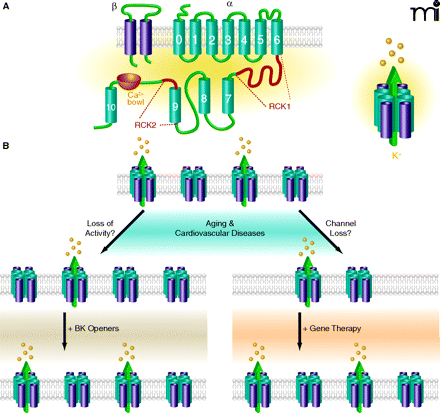High-conductance, Ca2+-activated K+ Channels: Altered Expression Profiles in Aging and Cardiovascular Disease

Schematic diagrams of the BK channel structure and the therapeutic strategies to restore BK channel function to the vasculature during aging and cardiovascular diseases. (A) The structure of the pore-forming α subunit (BKα) and regulatory β1-subunit (BKβ1) of the BK channel. Four BKα subunits co-assemble with four BKβ1 subunits to form the channel heteromultimer (shown at right). (B) Schematic diagram depicting BK channel abnormalities in aging and cardiovascular diseases and possible therapies. Left: A disease-related loss of channel activity may be amenable to treatment with BK channel openers that increase channel activity to promote vasodilation. Right: The loss of the BKα and/or BKβ1 channel proteins associated with aging and cardiovascular diseases may be restored by gene therapy using smooth muscle-specific promoters to re-express these subunits as functional BK channels in diseased VSMCs.




